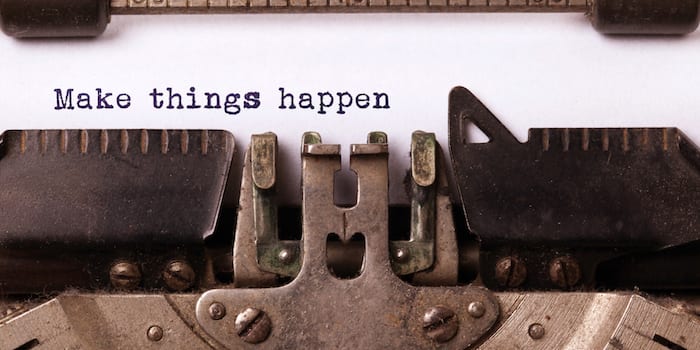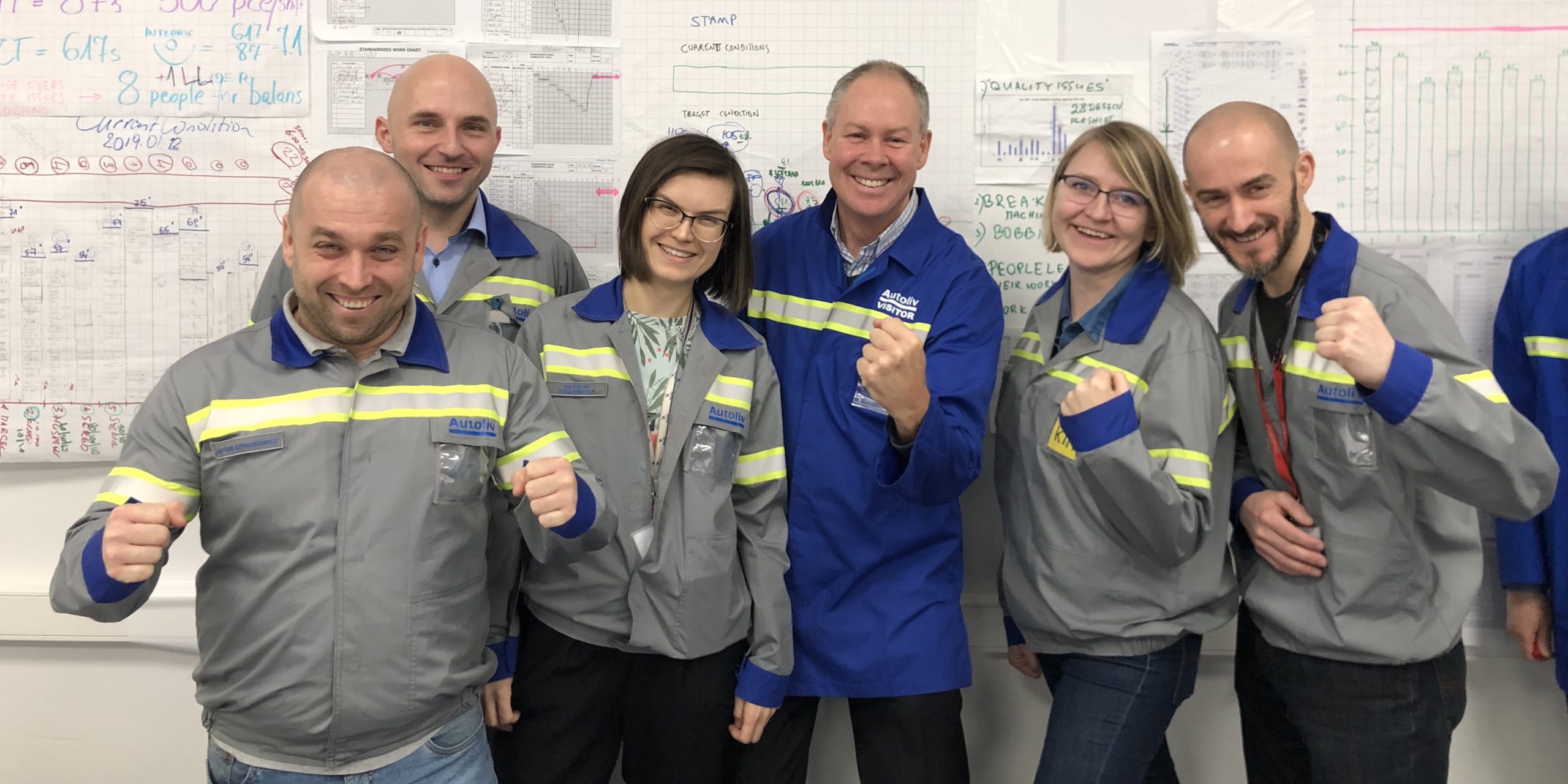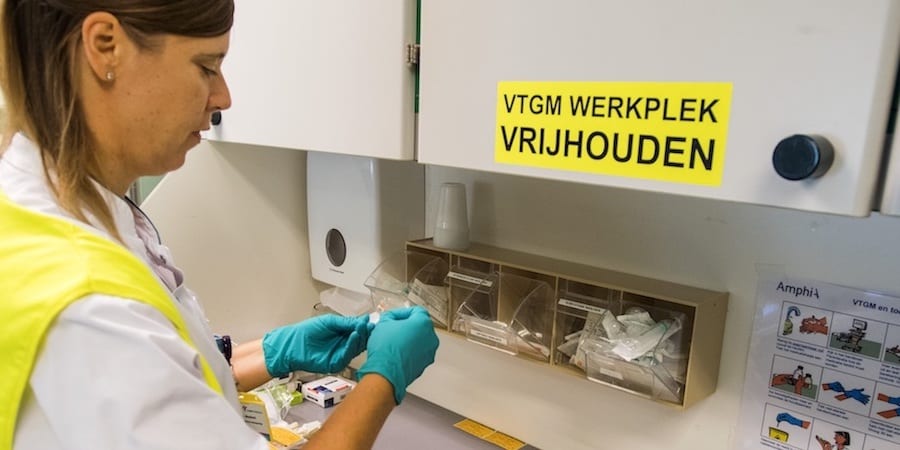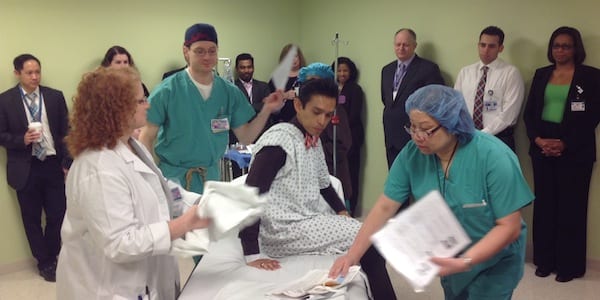
Monozukuri, Hitozukuri, Kotozukuri
RESEARCH – The authors present a new perspective on value creation. In addition to monozukuri (making things) and hitozukuri (making people), they discuss the idea of kotozukuri, making things happen.
Words: Michael Ballé, Daryl Powell and Kodo Yokozawa
The slogan “Good thinking, good products” is prominently displayed throughout Toyota, from a banner hanging to the ceiling in a plant to the first exhibit you see at the Toyota Memorial Museum and the parting gift pens you receive after a factory tour.
Toyota’s lean strategy is clearly product-based, and it is shaped around the idea of “one-time customer, lifetime customer.” Once you buy a Toyota, you should find the next car you want in the Toyota range and never consider driving another brand again. This strategy rests on four key features. First of all, a wide and frequently-updated range of products (which results from aggressive product planning). Secondly, engineering expertise and knowledge to come up with car designs that blend the robustness of previous models with bold evolutions that capture the spirit of the times. Thirdly, skilled manufacturing to reliably produce top quality products safely, at ever lower costs, in order to remain competitive. Finally, strong partnerships with suppliers to draw from a constant flow of materials (for example, regular deliveries of parts in day-to-day production) and innovation (like the design and development of components, modules, platforms and vehicles).
As long-time students of lean and Toyota, we were familiar with its core concept of Monozukuri through Hitozukuri:
- Monozukuri stands for “making things” – the passion or art of making things, which in the Toyota context involves keeping the spirit of craftsmanship alive within industrial production, by always striving for better quality and lower cost through kaizen.
- Hitozukuri stands for “making people” – the passion and art of developing people through an education process, with an emphasis of life-long learning. This is about developing people’s skills in their area of expertise, as well as their ability to work with others across functional boundaries.
Beyond Toyota, the lean theory is clear. It stems from the response that emerged out of Japan to Dr. Deming’s challenge of building quality into the process by testing work as it happens, not just at final inspection.

In any industrial operation, both monozukuri and hitozukuri are constant challenges. As the tasks of craftsmen are progressively replaced by machinery (whether in assembly or accounting, or more recently with websites and Apps in the sales shop), operations become black boxes that no one fully understands. Along the way, people lose clarity over how things work and the deeper meaning they contain. Machines are absolutely necessary, but they don’t lead to new innovative processes and they don’t learn to face unexpected conditions.
Monozukuri is the art of using machines, even as large as a stamping press or complex as an AI system, as a craftsman tool to produce excellent human work: the person is always the driver. To maintain a high level of care in repetitive, highly-automated processes, Toyota devised a theory of four parts to help reveal problems:
- Standards: making a result repeatable by looking into the unpredictable problems at each step and learning how to make the unpredictable predictable – only humans can do so.
- Jidoka: making problematic situations and deviations from the standard appear as quickly as possible so that it is possible to look at the conditions of the problem while they remain (condition evaporate quickly). This is achieved both by having machines self-diagnose and signal when they’re out of standard conditions, and people self-inspect and call when they have a doubt about the quality of the work being done. As problems are solved and work is better understood, solutions can be incorporated in the normal workflow and the system, as a whole, progresses.
- Just-in-time: by clarifying through Kanban cards the work that needs to be done right now, in the quantity needed and at the time needed, the Kanban system takes the responsibility for scheduling away from front-line managers and lets them focus on delivering only good jobs on time by solving Manpower, Machine, Materials and Methods problems as they arise.
- Basic stability of demand (no overburden from peaks or downtime from troughs), of tools (tools that work) and of teams (knowing well the people one works with).
Monozukuri hinges on human insight and ingenuity through kaizen: the conviction that no process is ever perfect and the spirit of always seeking a better way by trying things one at a time. In Toyota’s theory of innovation, kaizen is the incubator of innovation because kaizen activities create an environment of seeking and accepting change on a daily basis.
Kaizen is the main locus of hitozukuri, making people. Children learn by discovering new concepts and vocabulary. Teenagers learn through discovering facts and procedures. Adults, however, already know most of this stuff and are full of their own personal experience. For adults, learning is essentially problem-based: by solving specific problems, adults confront what they know from experience (their “remembered self”) with what they experience right now (their “experienced self”) and this confrontation leads to new discoveries, new ideas and new memories… in other words, new learning.
Toyota’s theory on developing people on the job is based on:
- Knowing the work: understanding the work content of the job, the theoretical underpinnings of each concrete steps, and the problems that can occur according to different contexts.
- Motivation: being both confident on one’s own successes and keen to take on a challenge.
- Space to think: taking on a concrete challenge with space to think and support to try things until a new, better method is found.
- Seeing oneself progress, in terms of one’s ability to do the job in more challenging conditions, in terms of working better with others and having one’s initiatives accepted by one’s peers and in terms of taking more or different responsibilities.
The principles of Monozukuri in terms of achieving customer satisfaction from Just-in-time, Jidoka and Standards set the conditions for kaizen and hitozukuri, which, in turn, delivers better monozukuri by learning to make machines, processes and departments work better together to deliver more value to customers: higher quality at lower costs.
But, as Deming himself pointed out long ago, “simply to eliminate defects does not guarantee jobs in the future.” Products compete on three essential fronts: performance, quality and price. Quality is essential, but no less important than performance. Having the best mobile phone in the world won’t help you much if it is not also an App platform.

Product B is pricier than Product A, but has an advantage on performance – customers might be willing to make the cost/benefit trade-off. As Deming argues, performance and style (we can include style in a wider sense of performance) must also show constant improvement.
Which is exactly what we find at Toyota. Chief Engineers of Toyota cars are constantly arguing with design department heads and manufacturing directors for more daring styling and performance decisions, whilst the functional heads reply that maintaining known standards is the only way to guarantee quality. This is an ongoing debate and, as one Chief Engineer told us, the secret to a great car is “lots of conflict.”
What we have discovered is that beyond monozukuri and hitozukuri, there is a third, key “zukuri” term: kotozukuri, making things happen. This refers to the passion to make things happen, value creation from knowledge creation. The energy, the vitality to keep both monozukuri and hitozukuri strong by encouraging doing, not just thinking.
Any process that transforms perceived human needs into design specs, into manufacturing instructions is bound to bureaucratize and fall to Big Company Disease: process over customer preferences, silos over flow of value, compliance over talent, legacy over innovation. The very same focus on eliminating variation in order to make every task reliable and repeatable is also what kills the human spirit of inquiry and creativity and leads to habituation, thoughtless decisions and poor outcomes. In any organized process we will always have three hard problems:
- How do we keep engineers open to customer’s evolving tastes to draw exciting, functional designs?
- How do we bring this engineering passion into manufacturing to make cool robust products or services at an affordable cost?
- How do we bring suppliers and partners on board to benefit from the latest technologies to achieve the two previous goals?
This energy is by no means unique to Toyota. Steve Jobs, for instance, had it in spades. When his engineers brought him the first version of the iPhone, he noticed that carrying it in his pocket with his keys scratched the plastic-based screen. A month before the launch of the iPhone, he told his engineers “I won’t sell a product that gets scratched. I want a glass screen, I want it perfect in six weeks.” This energy, applied to many topics, is what gave us a product that changed the company, our lives and to some extent the world.
But Toyota is the only company that has tried to capture and theorize kotozukuri in order to teach it.
Kotozukuri brings two fundamental notions together: the need for strong storytelling (such as the product concept) to bring everybody together on a common improvement direction and the managerial energy to make the story come true through concrete improvements.
Kotozukuri is about facing three challenges:
- Finding the story that resonates with customers: how do we catch the spirit of the times whilst holding on to the heritage of what our customers expect from our products and services?
- Discovering and encouraging people who will make the story come true: which of our people have the talent to see the customer story beyond their own narrow specialism and which new skills do we need to acquire to keep up with the spirit of the times?
- Energizing management to make the story happen from design all the way to production and delivery: how do we create the collective leadership for functional heads to work together for the customer?
Kotozukuri happens: at the gemba, through gemba walks by senior executive to explore both occurrence problems and see the efforts teams make to reach targets; in the boardroom through hoshin kanri and clearly expressing what each executive intends to do to support the company’s overall strategy; and in middle-management reviews with A3 problem solving and working on interfaces between technologies and systems.
For example, the management team at Kongsberg Maritime Subsea in Horten, Norway, share the goal of “making things happen” by carrying out regular gemba walks. Through a process of discovery at the gemba, managers are able to better identify problems and opportunities for improvement by observing issues as they emerge in their natural surroundings. Things do not just happen in the meeting room; instead, management wants to “see with our feet and think with our hands”.
Kongsberg Maritime Subsea have been on a lean journey since 2014, when the company launched its lean program – The KONGSBERG Way. Initially adopting a focus on lean thinking and practice in its supply chain organization, the company has achieved some promising results – including winning the Norwegian Lean Company of The Year Award in 2017. Now, Executive Vice President Subsea, Bjørn Jalving, looks towards creating a true lean enterprise as the next frontier for the business. To achieve this, they have introduced the slogan Better Thinking, Better Products. “This slogan is about creating a space for our employees to think, and motivating team members to make suggestions for improving our products and processes,” says Bjørn. “The vision is simple: sustainable lean growth. And we will realize this by eliminating waste and intensifying our focus on customer value creation to make our products and processes safer, better, faster, cheaper.”
Dr. Deming’s main point was that quality was made by top management. In more modern terms, what Amazon’s founder and CEO Jeff Bezos describes as having High Standards widely deployed at all levels of detail. Deming’s prescription in the 1990s was improving style and performance while reducing defects:

Bezos advised having high standards on inventing, customer care, and hiring, from the outset at Amazon; but also learned on the way that operational processes require high standards, such as keeping fixed problems fixed, eliminating the root cause of defects and inspecting processes within the process itself. Twenty years on (or more), both prescriptions are strikingly similar, and as relevant today as they were in the 1950s when Toyota developed its method to do this.

Monozukuri from hitozukuri is not enough to make your company successful without the impact of kotozukuri – the shaping the stories that carry the energy to bring the passion of engineers for customer satisfaction all the way to production and delivery. Management effort lays in finding the right stories, bringing people on board and supporting them in developing the knowledge and tools to make these stories true every day. To perceive the true strategic impact of lean thinking, we need to add a third leg of the stool that supports customer satisfaction beyond monozukuri and hitozukuri: we need to learn more about kotozukuri.
THE AUTHORS



Read more


INTERVIEW – What skills do coaches need to successfully support lean transformations in the service sector? Our colleagues from Australia tells us about their experience.


INTERVIEW – Bringing nurses together and giving them a space to discuss problems on a regular basis has allowed this hospital in Holland to successfully embrace lean thinking and reap its benefits.


FEATURE – We tend to describe lean as a holistic approach to a transformation, but we won’t be able to truly embrace it until everyone starts to see the organization as a system.


INTERVIEW - New York City's public hospitals system leveraged lean principles and techniques to improve the quality of care and boost organizational performance.

